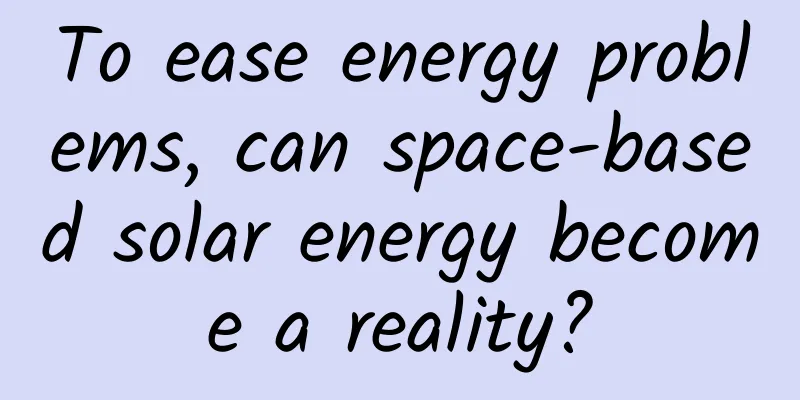To ease energy problems, can space-based solar energy become a reality?

|
According to Science and Technology Daily, the European Space Agency recently released an artist's concept map of "space-based solar energy." In the map, the energy generated by a giant solar power station floating in space is emitted toward the earth. Decades ago, American aerospace engineer Peter Glaser proposed a plan to put photovoltaic power stations into the orbit of solar satellites. His plan was to build a huge solar array to collect a large amount of sunlight, generate electricity through the principle of photoelectric conversion, and then transmit the generated electricity to the earth in the form of microwaves, and then convert it back into electricity after rectification and send it to the national power grid. Recently, it was reported that the first prototype of Airbus' space-based solar satellite was successfully tested. Airbus has demonstrated photovoltaic transmission technology that can transmit solar power from space. Airbus has now demonstrated how this new technology concept works in its X-Works innovation factory. The core of the space solar power station is the solar power generation equipment. At present, solar cells include semiconductor solar cells and photochemical cells under research. Semiconductor solar cells can be subdivided into four types: silicon solar cells, multi-compound thin-film solar cells, polymer multilayer modified electrode solar cells and nanocrystalline solar cells. Currently, many countries are studying space solar power generation technology. The team of the Qian Xuesen Space Technology Laboratory of the Fifth Academy of China has carried out specific research on solar power stations and is in the research and experimental stage. In March 2012, the Chinese Academy of Sciences proposed a "four-step" strategy in the "Report on the Forecast and Countermeasures of the Development of Space Solar Power Station Technology", believing that my country may develop the first commercial space solar power station system and realize the commercial operation of space solar power stations between 2030 and 2050. However, some scientists believe that space-based solar energy currently faces problems such as high power generation costs, possible environmental pollution, and inability to guarantee safety. With the development of aerospace technology, if these problems and difficulties can be properly handled, it may be possible to build solar power stations in space in the future. (Xu Mingyang) |
>>: What happens if you meet a male doctor during a gynecological examination?
Recommend
Feasibility analysis of Xiaomi-LeTV merger
Xiaomi and LeEco merge, how is it possible?! When...
Ctrip's exploration and practice of physical linking technology
Author|Ctrip Travel AI R&D team is committed...
Hangzhou Asian Games successfully concluded! What kind of black technology is contained in the world's first "CNC lawn"?
The 19th Asian Games came to a successful conclus...
50 tricks of cross-border marketing
No matter how the market environment changes, cro...
WeChat voice messages are automatically played in Moments! Netizens: Parading in the streets is a social death
Zhang Xiaolong once complained about how many peo...
Why do people who don’t feel sick when riding in a gasoline car feel sick when they get on a tram?
Why do people who don’t feel sick when riding in ...
How many airports are there in our country (updated in July 2020)?
New airports are built in my country every year, ...
Basic knowledge of data that operators must understand (Part 2)
Which indicators do website operations pay more a...
The domestic APM industry is booming: Is OneAPM+Bonree really equivalent to Tingyun?
The hot listing of NewRelic has triggered a frenz...
Google will no longer support Google services on Android 2.3.7 and below
Google announced that starting from September 27,...
Write your own Bayesian classifier to classify books
[[141939]] Background and Purpose First of all, t...
4 key steps to community operation from 0 to 1!
With the explosion of "private domain traffi...
With the same 4GB of memory, why can the iPhone be used smoothly for 5 years, but Android cannot?
Looking back at some of my friends around me, unt...
Yuanfudao Children's Programming Course L1+L2
LEVEL1 Course Content Introduction Based on face ...
Apple releases the latest beta version of iOS 15.2: new child communication safety features added!
[[434241]] Earlier today, Apple released the seco...









